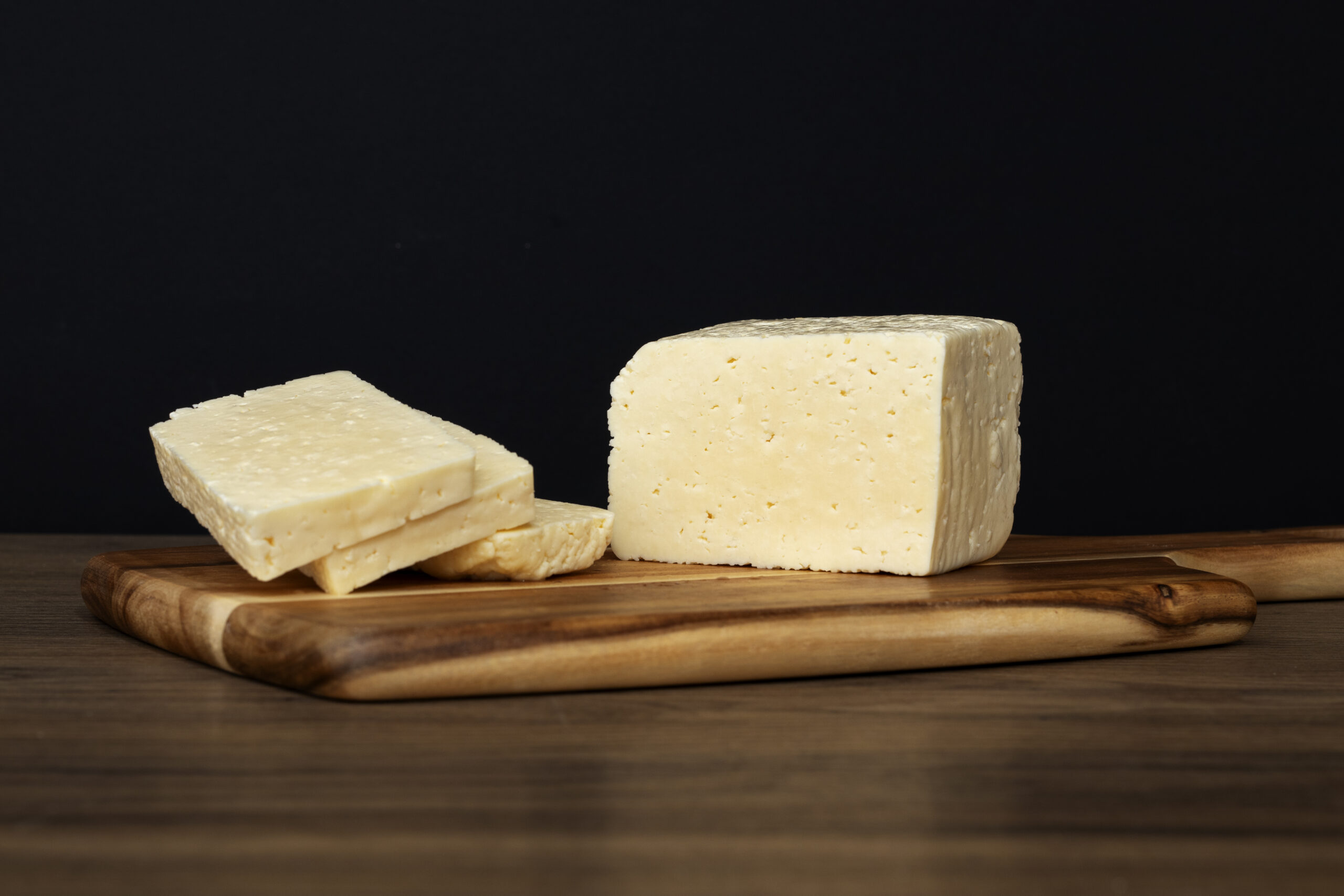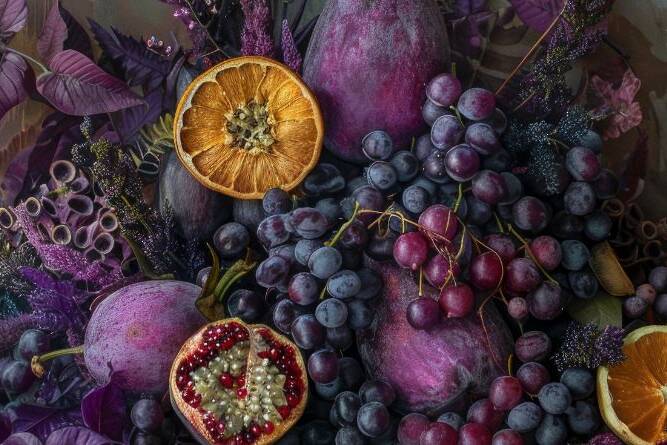I’ve always believed that nature gives us exactly what we need—often in the most vibrant, colorful packages. Flavonoids are a perfect example. These powerful compounds are found in the foods we often encourage people to eat more of: berries, apples, onions, green tea, or dark chocolate. There are endless flavonoids benefits one can reap if you eat smartly.
Flavonoids aren’t just plant pigments—they’re natural healers. They support brain function, help slow down age-related decline, protect cells, and bring down inflammation. Science is only beginning to uncover just how far their benefits go.
If there’s one simple shift I encourage you to make—it’s this: start adding more flavonoid rich foods to your plate. Your brain, your energy, your mood—they all benefit from the quiet, consistent support these foods provide.
How Flavonoid Rich Foods Support Brain Health
When I talk about brain health, I always remind people—it’s not just about puzzles, memory games, or supplements. What you eat every day plays a powerful role. And flavonoids? These are powerful when it comes to protecting the brain, especially as we age. Here’s why:
- They cross the blood-brain barrier.
Some flavonoids are able to move past the protective shield around your brain, allowing them to act directly within neural tissues. - They reduce oxidative stress.
Once inside, flavonoids help neutralize free radicals—unstable molecules that can damage brain cells and accelerate aging. - They lower inflammation in the brain.
Chronic low-grade inflammation is linked to cognitive decline. Flavonoids help calm that internal fire. - They support neuron communication.
Flavonoids improve synaptic signaling, which means better learning, memory, and adaptability of the brain. - Research backs it.
A Neurology study from Harvard (2021) found that people with a higher intake of flavonoid rich foods had a lower risk of cognitive decline. - The best brain-friendly sources?
Green tea, cocoa, apples, onions, or blueberries—simple, everyday foods that go a long way in protecting the mind.
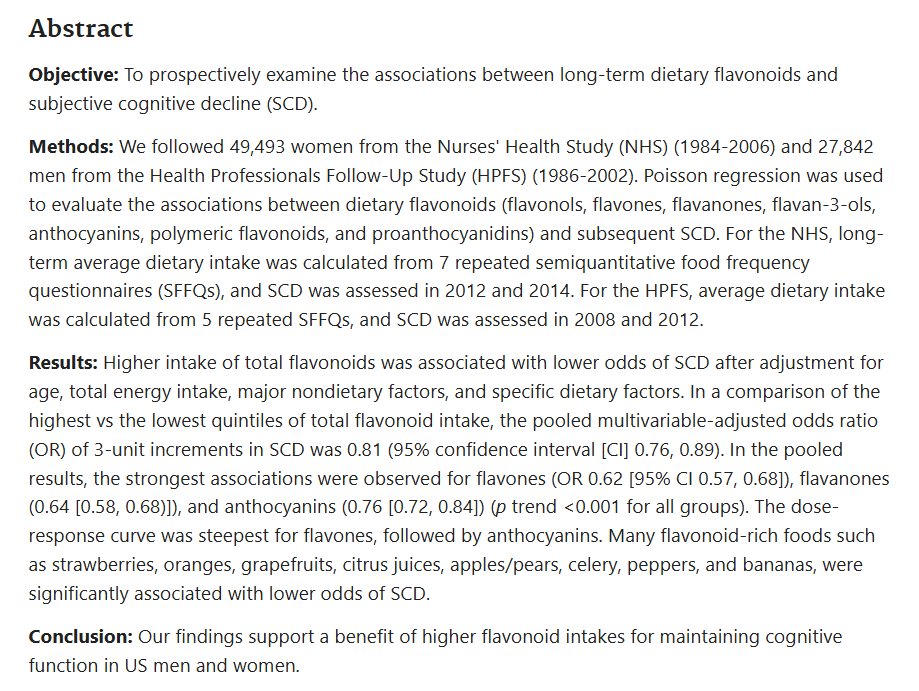
The Best Flavonoid-Rich Foods to Add to Your Plate
When I talk about nutrition, I always say—don’t chase superfoods, just look at your plate. The good stuff is often already there. Flavonoid rich foods are found in many everyday ingredients, and when you bring in variety and color, you naturally boost your intake.
When it comes to flavonoids, variety matters; that’s why I often say: eat a rainbow. Different colors mean different types of flavonoids, each offering its own unique benefit to your brain and body.
Here’s where flavonoids are found in abundance, grouped by category:
Berries (especially blueberries):
Blueberries are a powerhouse—rich in anthocyanins, they’ve been shown to improve memory and coordination while slowing brain aging. Strawberries and blackberries offer similar flavinoids benefits, supporting neural health and reducing inflammation.
Green tea:
Loaded with catechins like EGCG, green tea sharpens focus and supports mental clarity. It also helps calm the nervous system by balancing neurotransmitters like GABA. A gentle energy booster without the crash.
Dark chocolate (cocoa):
Cocoa is rich in flavanols that improve blood flow to the brain, enhance mood, and support verbal learning. Go for 70% or higher, and enjoy in moderation.
Apples and onions:
Both contain quercetin, a potent flavonol. It protects brain cells from oxidative stress and supports cleansing pathways. Keep the apple peel on, and go for raw or lightly cooked onions to preserve the flavonoids benefits.
Citrus fruits (like oranges):
High in flavanones, which have been linked to improved blood flow and cognitive performance. A simple orange can do more than just boost your vitamin C.
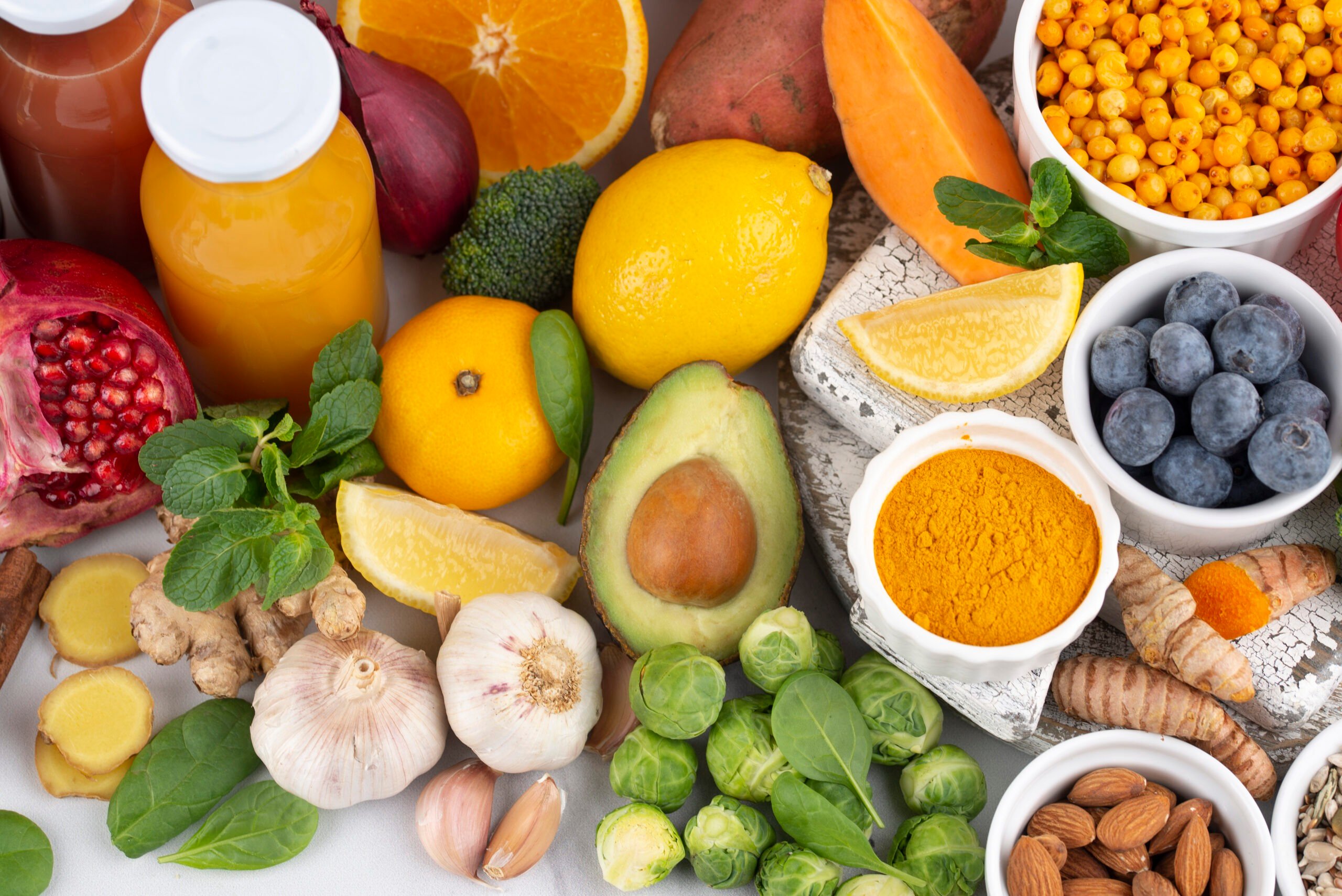
Leafy greens and broccoli:
Spinach (palak), fenugreek (methi), amaranth (rajgira), kale, and broccoli contain a mix of flavonoids and antioxidants that help reduce inflammation, support gut health, and keep the mind clear.
Legumes (like soy and lentils):
Packed with isoflavones, which may help regulate inflammation and support hormonal balance, especially helpful as we age.
The beauty of all this? These foods aren’t rare or expensive. They’re already in your kitchen—or can be. Build your plate with more of them, and your brain and body will feel the difference.
Flavonoids Benefits, Backed by Science
Flavonoids have been studied for decades, and the science around their benefits continues to grow. Regular intake of flavonoid rich foods has been shown to support multiple systems in the body, especially when consumed consistently over time.
Studies show that flavonoids can help reduce blood pressure, thanks to their ability to relax blood vessels and improve circulation. They also play a role in supporting cleansing, helping the liver and other organs process toxins more efficiently.
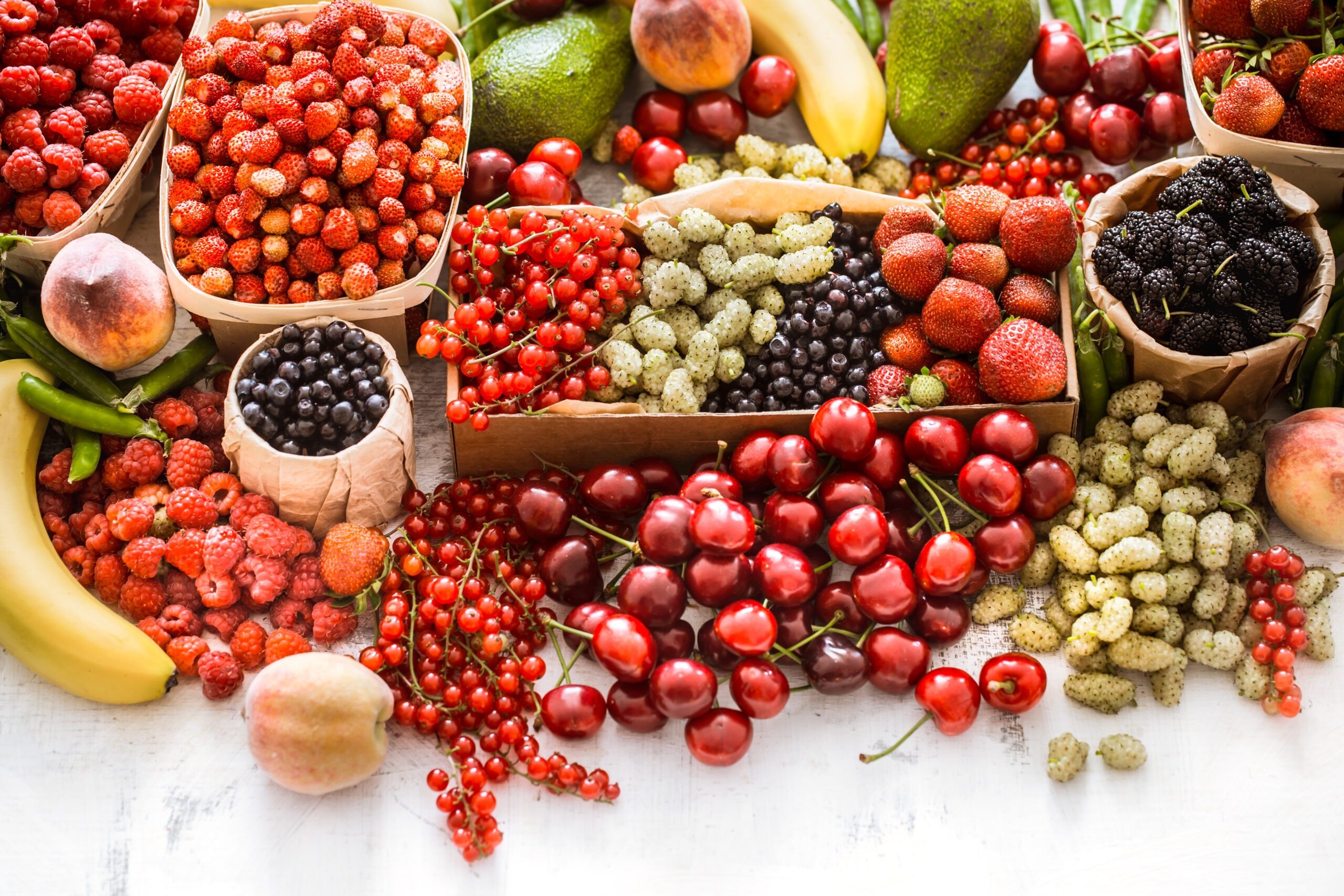
Another area where flavonoids shine is the gut microbiome. They help feed beneficial bacteria, promote microbial diversity, and create an environment that supports digestion and immunity. Their anti-inflammatory effects are also well documented, reducing the risk of chronic inflammation and degenerative diseases, including cognitive decline.
And while supplements exist, research consistently shows that these flavonoids benefits are most effective when they come from real, whole foods—not pills. It’s the synergy of compounds in natural foods that makes the real difference.
Flavonoids Benefits and Cognitive Health
Over the years, we have come across more and more research confirming what nature has always hinted at—flavonoids support the brain in powerful ways. Some studies have shown that people who regularly eat flavonoid rich foods like berries, apples, and green tea may have a lower risk of cognitive decline as they age.
A Harvard study published in Neurology followed over 77,000 people and found that those who consumed more flavonoids had up to a 20% lower risk of developing memory issues and diseases like Alzheimer’s.
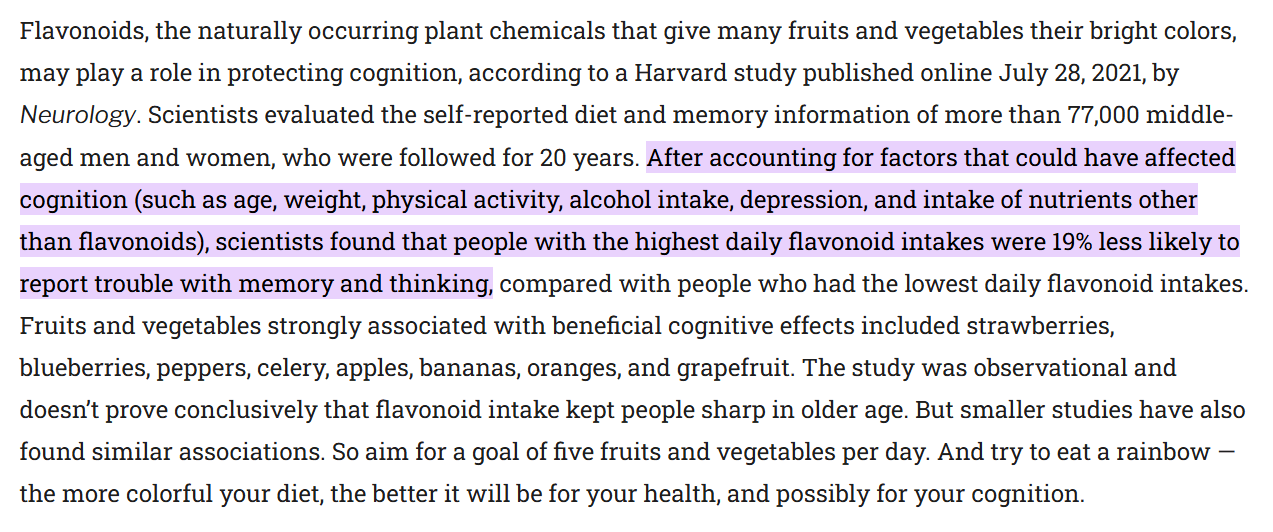
In Parkinson’s disease, certain flavonoids may protect brain cells that usually get damaged over time. Some findings even suggest that people with Parkinson’s who eat more flavonoid-rich foods live longer than those who don’t.
While this science is still evolving, one thing is clear: the more colorful, plant-based foods you add to your plate, the better your chances of protecting your brain—naturally, and gently, over time.
Bioavailability: Making the Most of Your Flavonoids
It’s not just about eating flavonoid rich foods—it’s also about how well your body absorbs and uses them. That’s what we call bioavailability.
To make the most of what you’re eating, try these simple tips:
- Eat them with healthy fats.
Flavonoids absorb better when paired with fats like olive oil, nuts, avocado, cold-pressed mustard oil, groundnut oil, or desi ghee. Pair these with a handful of almonds, cashews, or coconut slices. You can also drizzle some wood-pressed sesame oil or add avocado (now locally available in many cities) to your salads - Avoid peeling or juicing your fruits.
The skin—especially on apples and grapes—is where many of the flavonoids live. Wash them well and eat them whole. - Mix raw and cooked.
Gentle cooking (like steaming or stir-frying) can make some flavonoids more available, while raw keeps others intact. - Pair them with Vitamin C.
Think: berries with citrus or peppers with greens. It helps with absorption. - Avoid overprocessing.
The more natural the food, the higher the flavonoid content.

And finally, diversity matters. The wider the range of flavonoids in your nutrition profile, the better your body can use them.
Flavonoids Are Found In Everyday Foods: Here’s What to Look For in Your Meals
You don’t need a complex meal plan to get your flavonoids in. Just a few smart swaps, and you’ll be giving your body (and brain) exactly what it needs.
Here’s a sample day:
- Breakfast: Oats topped with blueberries, apple slices (with skin), and a handful of walnuts
- Mid-morning: A cup of green tea with a square or two of good-quality dark chocolate (70% or higher)
- Lunch: Spinach and red onion salad with citrus vinaigrette, grilled chicken, ethically sourced and real paneer or tofu
- Snack: Mixed berries with a spoon of plain yogurt
- Dinner: Stir-fried mustard greens (sarson), palak (spinach), and methi (fenugreek) in cold-pressed mustard oil with paneer and hand-pounded red rice. Or, you can try a combination of stir-fried broccoli, spinach, and kale in olive oil with tofu and brown rice
Tip: Rotate your produce weekly. Seasonal variety means you’re naturally getting different types of flavonoids—and that’s where the real magic lies.
Final Word: Add Color, Add Flavonoids
You don’t have to eat perfectly to feel better. But adding more flavonoid rich foods—in all their colors, textures, and flavors—is one of the simplest ways to protect your brain, support your gut, and reduce inflammation gently over time.
Flavinoid’s benefits aren’t immediate or flashy—but they’re steady and powerful. That handful of berries, that extra serving of greens, that cup of tea… it adds up.
Your body responds to consistency, not intensity. So, start small, keep it simple, and enjoy the process. When you eat the right kind of color, your body knows exactly what to do with it.
Ready to Make Your Health a Priority?
Start your journey with one positive action today.
Check Out Our Wellness Program with Luke.
Looking for personalized advice? Our experts are ready to help you thrive.
Reach Out to Team Luke’s Integrative Health Coaches!
Book a one-on-one with our team. Call: 1800 102 0253 or write to us at [email protected].
Disclaimer: The information provided in this blog is intended for educational purposes only and is not a substitute for professional medical advice, diagnosis, or treatment. Always consult with your healthcare provider before making any changes to your nutrition, exercise routine, or lifestyle. The effectiveness of the strategies mentioned may differ from person to person. The content is based on current research, but it is important to remember that science and health recommendations may evolve over time.


